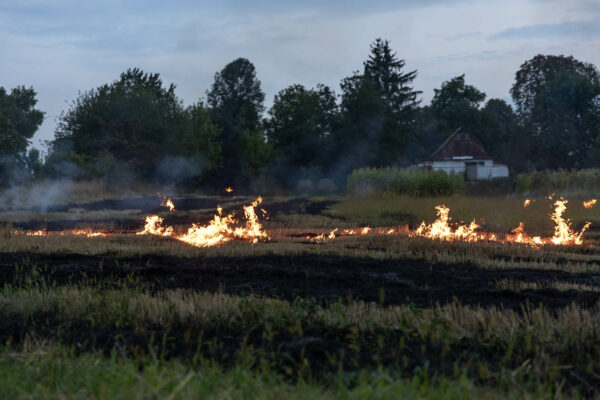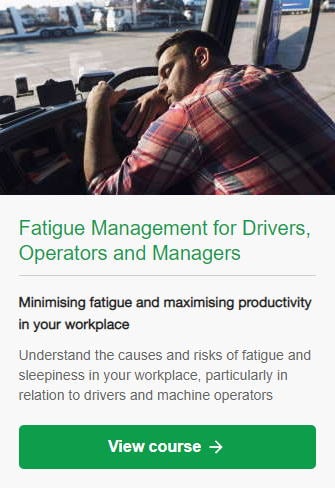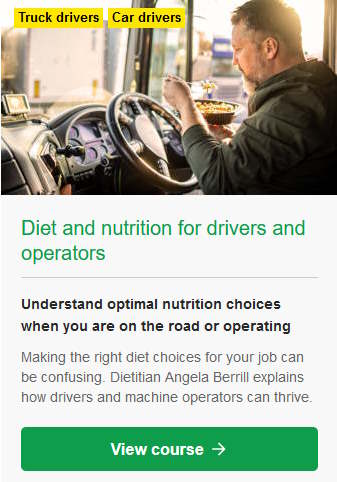Summer presents some major challenges for drivers and machine operators. Here’s how you can stay safe:
Fatigue
Hot, muggy nights disrupt your sleep, as does an early sunrise. Invest in a low-noise fan and thermometer for your bedroom, and some blackout curtains. Keep the room under 23 degrees Celsius, if possible, and adjust your bed linen to suit. Sleep specialists recommend 16-20C as the optimal range, but it’s all down to personal preference. Your body needs to cool down to go to sleep, so if it’s too hot in your bed, it can delay you going to sleep.
Fatigue causes your reactions to be slower and you are more likely to fall asleep at the wheel. Check out our fatigue course for loads of advice for how to deal with fatigue management as a driver or machine operator.
Take breaks when required. Look out for your workmates demonstrating signs of fatigue.
Heat
Heat causes dehydration which leads to sluggish reactions, a distracting headache, confusion, nausea and fainting.
Avoid working in the sun during the hottest part of the day, if you can.
Fluid intake is important to stave off thirst. As soon as you feel thirsty, your body is already dehydrated. There might be a time imperative as a driver which means you don’t want to stop until your natural break time, but it can cause medical issues with your bladder in the future if you are constantly holding on.
Water is by far the best option. Cut down on caffeine as it can dehydrate you even more.
For advice on diet and hydration for drivers and operators, click on the course to the left.
Sun exposure

Getting on for 100,000 non-melanoma skin cancers are diagnosed yearly in New Zealand. So, the correct PPE for your skin is essential:
- Hat – preferably one with a wide brim and some neck protection
- Sunscreen – preferably at least SPF30. Apply it 15 minutes before you go out in the sun, and reapply it every two hours
- Clothing – wear UV-rated, breathable clothing, but ensure it complies with your PPE requirements.
- Sunnies – wear close-fitting, UV-rated sunglasses. It’s your preference as to what lens colour, but be careful when travelling between light and dark places (e.g. forklifts driving outside and then into a warehouse).
Even cloudy days can have high UV levels.
If you are operating a machine with a ROPS (rollover protection system), you may be able to attach a shade to it to make it more bearable.
Tarmac melting

In extreme heat, tarmac will melt which causes two problems: you get sticky tar on your vehicle, and the road becomes slippery (a real problem for motorcyclists). Look out for areas of tar bleed which look shiny.
Fire risk

When working outside, be aware that hot machinery can cause tinder-dry grass to catch on fire. Be cautious when pulling off the road.



